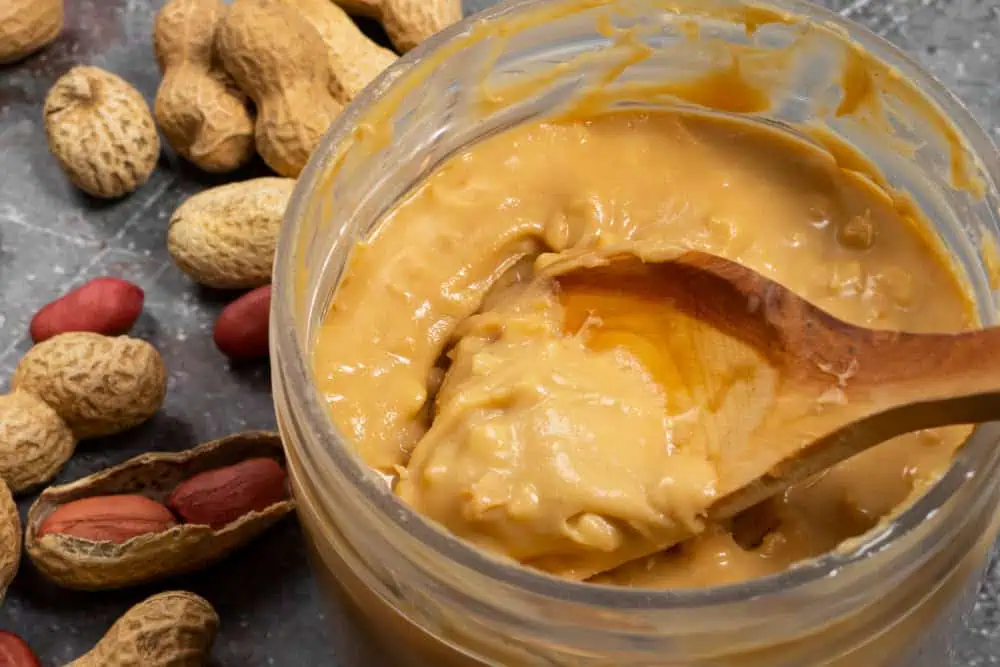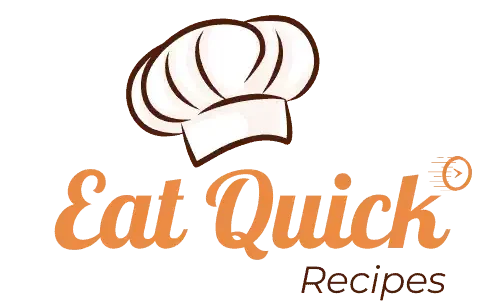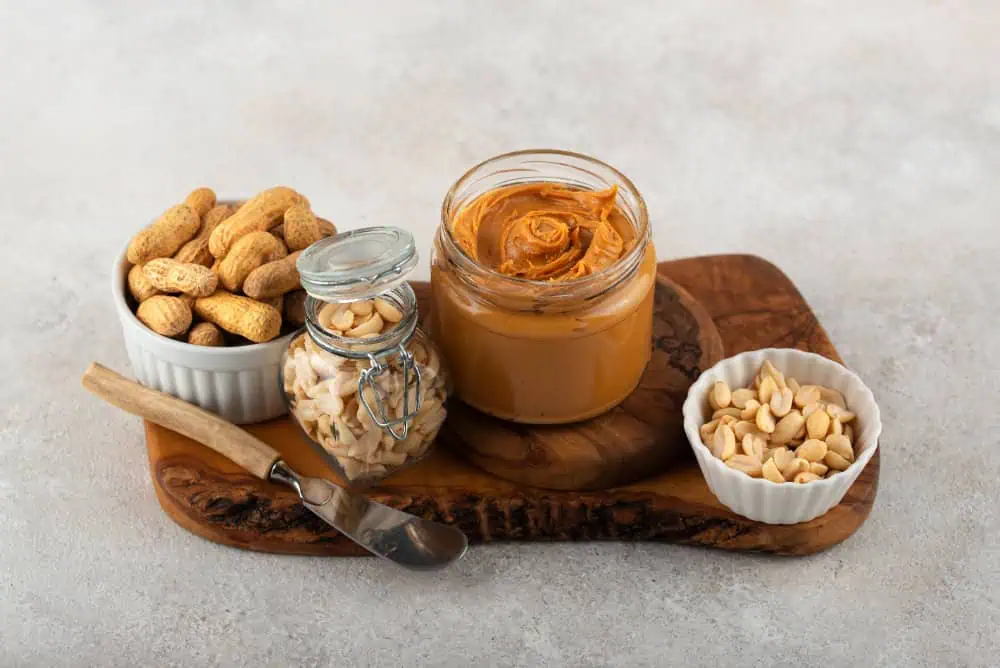Can you cook with peanut butter? Absolutely! Cooking with peanut butter has become increasingly popular as home cooks discover its versatility beyond the classic PB&J sandwich. Whether you’re a culinary enthusiast or just starting your cooking journey, understanding how to cook with peanut butter can elevate your dishes to new heights. In this comprehensive guide, we’ll answer the question, “Can you cook with peanut butter?” and explore everything you need to know about incorporating this beloved ingredient into your cooking repertoire.
Understanding Peanut Butter in Cooking
Before diving into specific recipes and techniques, it’s essential to understand why peanut butter works so well in cooking:
- Rich in Healthy Fats and Protein: Peanut butter is a great source of protein and healthy fats, making it a nutritious addition to various dishes.
- Provides Creamy Texture: Its creamy consistency can enhance the mouthfeel of both sweet and savory recipes.
- Offers Natural Thickening Properties: Peanut butter can act as a thickener in sauces and soups, adding richness without the need for flour or cornstarch.
- Adds Depth of Flavor: The nutty flavor of peanut butter can complement a wide range of ingredients, from fruits to meats.
- Contains Both Sweet and Savory Notes: This versatility allows it to be used in both sweet treats and savory dishes.
Types of Peanut Butter for Cooking
Natural vs. Processed Peanut Butter
When it comes to cooking with peanut butter, the type you choose can significantly impact your dish. Here’s a breakdown of the two main types:
- Natural Peanut Butter:
- Contains only peanuts and salt.
- May separate and require stirring before use.
- Best for health-conscious cooking, as it lacks added sugars and oils.
- Ideal for recipes where a pure peanut flavor is desired.
- Processed Peanut Butter:
- Contains stabilizers and emulsifiers to prevent separation.
- More consistent texture, making it easier to use in recipes.
- Often contains added sugars and oils, which can affect the flavor and nutritional profile.
- Better for baking, as it provides a more uniform consistency.
Choosing the Right Peanut Butter for Your Recipe
When deciding which type of peanut butter to use, consider the following:
- Flavor Profile: If you want a strong peanut flavor, natural peanut butter is the way to go. For a sweeter taste, processed peanut butter may be preferable.
- Texture: If your recipe requires a smooth consistency, processed peanut butter is often easier to work with.
- Health Considerations: If you’re looking for a healthier option, opt for natural peanut butter without added sugars or oils.
Best Cooking Methods with Peanut Butter
Stovetop Cooking
When you cook with peanut butter on the stovetop, remember these tips:
- Use Low to Medium Heat: High heat can cause peanut butter to burn quickly, so it’s best to keep the temperature low.
- Stir Constantly: This prevents the peanut butter from sticking to the pan and burning.
- Add Liquid Gradually: If you’re incorporating peanut butter into a sauce or soup, add liquid gradually to prevent clumping.
- Watch Carefully: Peanut butter can burn quickly, so keep an eye on it while cooking.
Baking with Peanut Butter
Peanut butter in baking offers these advantages:
- Adds Moisture to Baked Goods: Peanut butter can help keep cookies and cakes moist.
- Creates Tender Texture: The fats in peanut butter contribute to a tender crumb in baked goods.
- Provides Natural Binding Properties: Peanut butter can help hold ingredients together, making it a great addition to no-bake recipes.
- Enhances Flavor Depth: The nutty flavor of peanut butter can elevate the taste of cookies, brownies, and other desserts.
Popular Dishes You Can Cook with Peanut Butter
Savory Dishes
- Thai-Inspired Peanut Sauce: A creamy sauce made with peanut butter, soy sauce, lime juice, and garlic, perfect for drizzling over grilled chicken or vegetables.
- African Peanut Stew: A hearty stew made with sweet potatoes, tomatoes, and spices, thickened with peanut butter for a rich flavor.
- Satay Marinades: Use peanut butter as a base for marinades for grilled meats, adding depth and flavor.
- Noodle Dishes: Incorporate peanut butter into noodle dishes for a creamy, nutty sauce that pairs well with vegetables and proteins.
- Vegetable Stir-Fries: Add a spoonful of peanut butter to your stir-fry sauce for a unique twist on traditional flavors.
Sweet Treats
- Peanut Butter Cookies: Classic cookies that are easy to make and always a crowd-pleaser.
- No-Bake Desserts: Combine peanut butter with oats, honey, and chocolate for quick and delicious treats.
- Brownies and Blondies: Swirl peanut butter into brownie or blondie batter for added richness.
- Smoothies and Shakes: Blend peanut butter into smoothies for a protein boost and creamy texture.
- Energy Balls: Mix peanut butter with oats, nuts, and dried fruit for a healthy snack.

Tips for Cooking Success with Peanut Butter
To ensure your cooking with peanut butter is successful, keep these tips in mind:
- Always Measure Precisely: Peanut butter can be dense, so measuring accurately is crucial for consistent results.
- Bring to Room Temperature Before Using: This makes it easier to mix and incorporate into recipes.
- Mix with Warm Liquids for Smooth Incorporation: If you’re adding peanut butter to a sauce or soup, warm it slightly to help it blend smoothly.
- Store Properly Between Uses: Keep peanut butter in a cool, dry place, and refrigerate natural varieties after opening.
- Consider Allergies When Serving to Others: Always check for peanut allergies before serving dishes containing peanut butter.
Common Mistakes to Avoid
When cooking with peanut butter, be mindful of these common pitfalls:
- Overheating and Burning: Always use low to medium heat to prevent burning.
- Using the Wrong Type for Your Recipe: Choose the right peanut butter based on the recipe requirements.
- Not Adjusting Salt Content: If using salted peanut butter, adjust the salt in your recipe accordingly.
- Improper Storage: Store peanut butter in a cool, dry place and refrigerate natural varieties to extend shelf life.
- Incorrect Measuring: Use proper measuring tools to ensure accurate amounts.
Nutritional Benefits of Cooking with Peanut Butter
Health Advantages
Cooking with peanut butter not only enhances flavor but also offers several health benefits:
- High in Protein: Peanut butter is an excellent source of plant-based protein, making it a great addition to meals and snacks.
- Good Source of Healthy Fats: The monounsaturated fats in peanut butter can help improve heart health.
- Rich in Vitamins and Minerals: Peanut butter contains essential nutrients like vitamin E, magnesium, and potassium.
- Contains Fiber: The fiber in peanut butter can aid digestion and promote a feeling of fullness.
- Promotes Satiety: The combination of protein and healthy fats can help keep you satisfied for longer periods.
FAQs About Cooking with Peanut Butter
Can you heat up peanut butter?
Yes, you can heat peanut butter, but do so carefully using low to medium heat. Stir constantly to prevent burning and achieve a smooth consistency.
Does cooking with peanut butter change its nutritional value?
While some nutrients may be slightly affected by heat, cooking with peanut butter generally maintains its nutritional benefits, especially its protein and healthy fat content.
Can you substitute peanut butter in recipes?
Yes, you can often substitute peanut butter with other nut butters like almond or cashew butter, though the flavor and texture may vary.
How do you thin peanut butter for cooking?
To thin peanut butter for cooking, gradually add warm liquid such as water, milk, or oil while stirring continuously until reaching the desired consistency.
Can you freeze dishes made with peanut butter?
Most dishes made with peanut butter freeze well, but texture may change slightly upon thawing. It’s best to test a small batch first.
Is peanut butter safe for everyone?
While peanut butter is safe for most people, those with peanut allergies should avoid it entirely. Always check for allergies when serving dishes containing peanut butter.
How long does peanut butter last?
Unopened peanut butter can last for several months past the expiration date if stored properly. Once opened, natural peanut butter should be refrigerated and consumed within a few months, while processed varieties can last longer at room temperature.
Storage and Shelf Life
Proper Storage Methods
To maximize the shelf life of your peanut butter, follow these storage tips:
- Keep in a Cool, Dry Place: Store peanut butter in a pantry or cupboard away from heat sources.
- Refrigerate After Opening Natural Varieties: Natural peanut butter can spoil faster due to the lack of preservatives, so refrigeration is recommended.
- Seal Container Tightly: Ensure the lid is tightly sealed to prevent air exposure, which can lead to rancidity.
- Store Upside Down to Prevent Oil Separation: This can help keep the oil mixed with the peanut butter, making it easier to use.
- Check Expiration Dates Regularly: Always be mindful of the expiration date and discard any peanut butter that has an off smell or taste.

Creative Ways to Cook with Peanut Butter
Breakfast Ideas
Start your day off right with these delicious breakfast ideas that incorporate peanut butter:
- Overnight Oats: Mix rolled oats with peanut butter, yogurt, and your choice of milk for a filling breakfast.
- Pancake Batter Addition: Add a spoonful of peanut butter to your pancake batter for a nutty twist.
- Smoothie Bowl Base: Blend peanut butter into your smoothie for added creaminess and protein.
- Toast Toppings: Spread peanut butter on whole-grain toast and top with banana slices or honey for a quick breakfast.
- Breakfast Bars: Make homemade breakfast bars using oats, peanut butter, and your favorite mix-ins like nuts and dried fruit.
Main Course Applications
Peanut butter can also shine in main dishes. Here are some ideas:
- Marinades for Grilled Meats: Use peanut butter as a base for marinades, adding soy sauce, garlic, and ginger for a flavorful kick.
- Sauce Base for Stir-Fries: Incorporate peanut butter into your stir-fry sauce for a creamy, nutty flavor that pairs well with vegetables and proteins.
- Soup Thickener: Add a spoonful of peanut butter to soups for a rich, creamy texture and added flavor.
- Salad Dressing Ingredient: Whisk peanut butter with vinegar, oil, and spices for a unique salad dressing.
- Sandwich Spreads: Beyond the classic PB&J, try using peanut butter in sandwiches with sliced apples or honey for a delicious twist.
Unique Peanut Butter Recipes to Try
To inspire your culinary creativity, here are a few unique recipes that showcase the versatility of peanut butter:
- Peanut Butter and Banana Smoothie: Blend together 1 banana, 2 tablespoons of peanut butter, 1 cup of almond milk, and a handful of spinach for a nutritious breakfast or snack.
- Peanut Butter Chocolate Chip Energy Bites: Combine 1 cup of oats, 1/2 cup of peanut butter, 1/3 cup of honey, and 1/2 cup of chocolate chips. Roll into balls and refrigerate for a quick energy boost.
- Peanut Butter Chicken Skewers: Marinate chicken pieces in a mixture of peanut butter, soy sauce, lime juice, and garlic. Thread onto skewers and grill for a delicious main dish.
- Peanut Butter and Jelly Overnight Chia Pudding: Mix 1/4 cup of chia seeds, 1 cup of almond milk, and 2 tablespoons of peanut butter. Let sit overnight, then top with your favorite jelly in the morning.
- Peanut Butter Curry: Sauté onions, garlic, and ginger, then add coconut milk, curry powder, and peanut butter for a creamy, flavorful sauce. Serve over rice or noodles.
Conclusion
Cooking with peanut butter opens up a world of culinary possibilities. From sweet to savory applications, this versatile ingredient can enhance both the flavor and nutritional value of your dishes. By understanding the proper techniques and following our guidelines, you can confidently cook with peanut butter in various recipes. Remember to experiment with different types and cooking methods to discover your favorite ways to incorporate this beloved ingredient into your cooking routine.
With its rich flavor, creamy texture, and numerous health benefits, peanut butter is more than just a spread; it’s a versatile ingredient that can transform your meals. Whether you’re whipping up a quick breakfast, preparing a hearty dinner, or baking a sweet treat, peanut butter can be your secret weapon in the kitchen.
Remember to store your peanut butter properly and always consider any dietary restrictions or allergies when cooking for others. With these tips and insights, you’re well-equipped to start your journey of cooking with peanut butter and creating delicious, nutritious meals for yourself and your loved ones.

